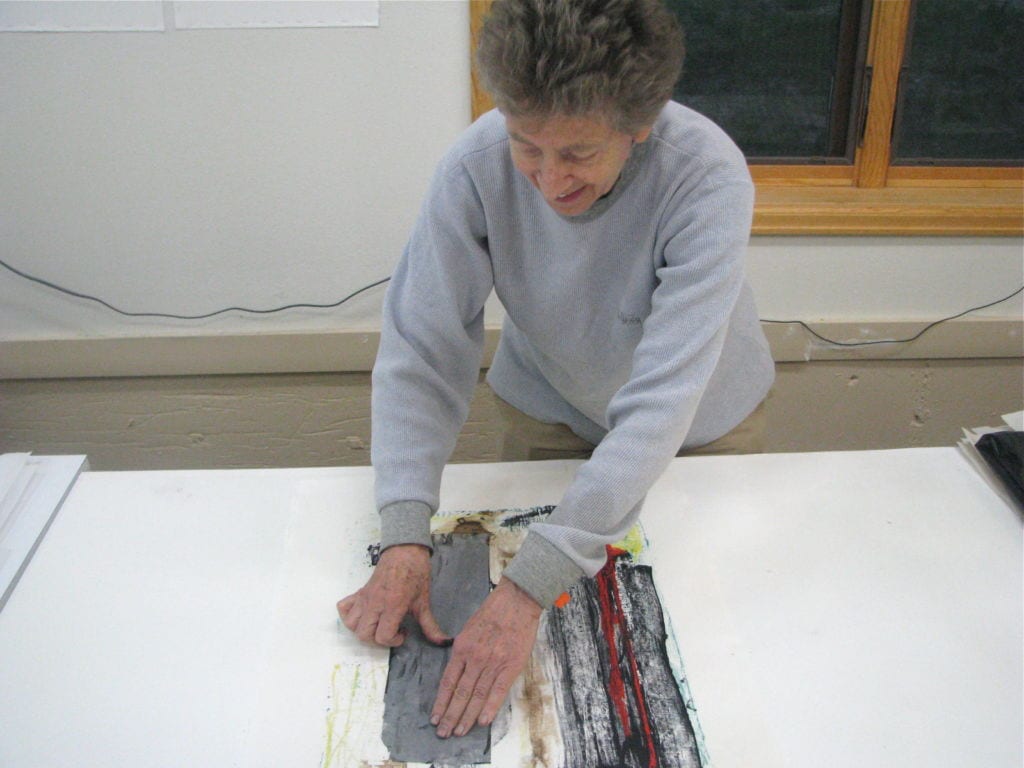Louise Fishman’s work celebrates process. In monumental, energetic surfaces of densely layered color and texture, her paintings exemplify a driven exploration of materials and mark-making. Using scrapers and trowels, along with more traditional paintbrushes, Fishman constructs loosely-gridded compositions by adding, scraping away and re-applying paint, sometimes working and reworking canvases over a long period of time. Remarkable not only for their technical mastery, her abstractions are also emotionally evocative. Physically stunning, her work is continually re-charged by her viewers’ reactions.
While Fishman’s paintings do not openly narrate the events of her life, they are certainly rooted in her cultural, political and emotional experiences. Born in Philadelphia in 1939, Fishman was active in the feminist movement of the late 1960s and early 70s. During this time, she temporarily abandoned painting for sculptural and material investigations that pursued a more distinctly feminine art. Fishman’s return to painting was anticipated by her seminal 1973 “Angry Women” series, which represented important figures in the feminist movement. Her subsequent embrace of gestural abstraction unapologetically confronted the male-dominated history of artistic discourse. At a time when postmodernism claimed painting to be “dead,” Fishman’s decisive re-appropriation of Abstract Expressionism repositioned it for a different era and gender. Continuing her support for the feminist cause, Fishman is also an advocate for gay and lesbian rights. Though she may reference specific personal experiences in her work, the feelings she conveys can be collectively understood.
From www.cheimread.com
